The capitalist paradigm as a world economic system that works for people and the planet is failing. For cities and nature, shifting graciously and well into the Anthropocene requires a fundamentally different political-economy that reflects new ethics and priorities.
I am spending this Fall in Kyoto Japan, traveling a bit in the country. The Institute for Humanity and Nature is my sponsor for the stay and this blog is inspired by Japan’s complexity. The nation is the home of the first, and still largest, mega-city in the world, Tokyo, a megalopolis of about 39 million people, woven together by trains, trams, subways, buses, vast infrastructure, shrines, and parks. There also still exists a vibrant artisanal culture, deeply immersed in knowledge of materials—clay, wood, silk, cotton, bamboo and stone, fire—handled with dexterity, skill, and concern. Along with the intensity of agricultural production, there is ample evidence of how deeply interwoven the Japanese continue to be with their environment. The country, one could argue, has been in the Anthropocene for a millennium. The Japanese have managed forests and streams, engaged in mixed cropping, the harvesting of wild plants and engaged in fiercely intense environmental management. Of course, they are not flawless or faultless and are now importing more food than they produce, more items than they manufacture. But there remains a great deal of food for thought in this historical relationship where nature is not alienated from human beings.
________________________
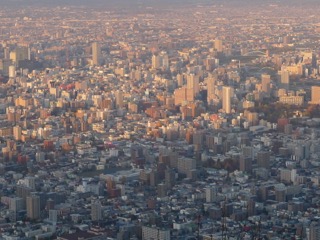
There seems to be growing consensus that the 21st century will be the century of the city, the new habitat of humans, and most especially in megacities. Cities are, of course, major sources of global greenhouse gas emissions due to their reliance on hydrocarbons for fuel. Their development creates storm water runoff due to the pervasiveness of impermeable surfaces, such surfaces—often made of dark materials like asphalt—capture heat and lead to heat islands compounded by waste heat emitted by heating and cooling equipment, vehicle traffic and more. They require vast networks of commodity chains to keep them functional, importing food, fiber, consumer goods, building materials, water, and power. They transform land as they expand, and leave contaminated land as they contract. Although cities cover only 2 percent of the world’s land surface, they consume over 75 percent of the earth’s material resources (UNEP 2016). Cities create many undesirable environmental impacts, near and far, including within the city sphere itself. Earth resources are treated as inputs, not assets with which humans are not engaged and responsible for, thus ensuring on-going existence of both the resource and human well-being. Currently, the environment is an abstraction, not a living, reacting and creating life force with which we are in a co-productive relationship.
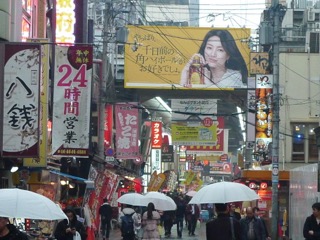
Given how they concentrate human activity, attention has turned to the possibility of cities also being able to lessen their impacts through the implementation of ecosystem services such as bioswales and permeable surfaces to capture stormwater, the planting of trees to mitigate urban heat, and the expansion of urban open spaces to enhance the quality of life in cities. With the possibility of utilizing renewable sources of energy, recycling water, and many other techniques, cities have recently been seen as not just global economic forces, but also able to implement sustainability programs and policies that will reduce their impacts, and hence on Earth systems, including on the climate. Actions to make cities more sustainable, it is believed, will mitigate global climate change by reducing greenhouse gas emissions and more. Cities, it is argued, are therefore both drivers of global environmental change, and the places where that change can be mitigated. The implementation of green infrastructure, reclaiming a place for nature in city functioning is an integral part of that strategy.
One major driver for the urgency to make cities more sustainable is to mitigate the acceleration of greenhouse gas emissions. This is to avoid the worse impacts of global climate change and increased temperatures that will cascade through Earth systems and upset the relatively unusually stable Holocene era. The Anthropocene, it is predicted, will bring enormous changes, including species extinctions, more violent weather, droughts, floods, and essentially more difficult conditions for human and other life. In this context, oddly, cities are seen as offering an ability to alter this frightening destiny. Yet it is clear that cities today, are artifacts of hydrocarbon energy. Reducing, or decarbonizing human activity and cities, undermines cities as we know them and thus the ability of cities to become the new homes of humans. Indeed, cities themselves must fundamentally change, shrink, scatter and return to the constraints of place. There must be a deconcentration of cities, a repopulation of abandoned countrysides through deliberate city building, cities whose activities are dependent on a deep understanding of places, resources, and scarcity in order to achieve the low or post-carbon future. Clearly this will also require a fundamental shift in economic regimes, and, no doubt, a deep transformation in lifestyles and wealth.
We should consider whether smaller low or decarbonized cities, embedded in landscapes, might not be the path to reduce human impacts. It is time to move beyond accepted and repeated tropes to go a bit deeper into the question of urban dwelling by humans and to expand our thinking about cities and what they can and have been.
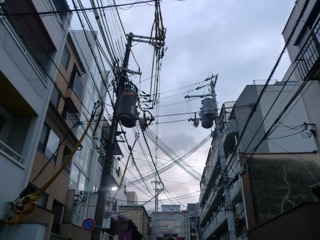
Lefebvre (2003:57) already has suggested that cities have exploded out of the historical space of the city to create worldwide urban society, erasing the qualitative differences between the city and the countryside (in Angelo and Wachsmuth 2015), enlisting in their metabolisms planetary resources (see the literature on urban metabolism Kennedy et al. 2007, Pincetl et al. 2012). If the planet is already urban, and humans, even if they are not living in what can be formally described as a city, are implicated in the modern networked lifestyle of internet and cell phones, does this not provide the launchpad for rethinking the scale and intensity of cities?
To meet the challenges of the inevitable Anthropocene we need to ask how we can best inhabit this new epoch. We must explore the potential of a deliberate, slow shift to deconcentrated urban agglomerations no longer dependent on hydrocarbons, but deeply dependent on keen Earth systems knowledge and observations in a changing world.
This is an alternative path that reconnects humans with nature and place. It is no longer about seeing nature as an external entity impacted by humans, but rather starts from the understanding that humans co-produce Earth systems. Nature is not a thing that reacts. Rather we live in an animate environment that is actively engaged with human activities and whose comportment creates conditions for its and our daily life and future.
The post megacity alternative proposes that in the age of the Anthropocene, it is possible to transcend—indeed necessary—the historic human/nature divide that emerged in the 17th century with the rise of natural and physical sciences. It involves, as LaTour (2010), Descola (2015), Ingold (2012) and others have noted, a revalorization of an understanding and engagement with nature that does not exist outside of what it is to be human. The objectification of nature as something outside of humanity, and unrelated, has enabled humans to exploit resources, people and places with complete disregard for short and long-term impacts and consequences: mountain-top coal mining, dumping of toxic wastes, spraying pesticides and herbicides and introducing genetically modified seeds, transforming rivers and water ways, depleting aquifers, filling in wetlands, enslavement of other humans who are different (dehumanizing them). The list is long, and indicates a lack of fundamental understanding that, whether we recognize it or not, we are in a partnership with nature, and that partnership may involve huge unintended consequences like global warming and resource exhaustion. It is the thinking that pervades the financialization of ecosystem services and greenhouse gas emissions, a kind of magical thinking that puts a monetary value on a finite set of natural processes, and through the trading of those values or services, the planet’s assets will be protected. The modernist hubris and cleverness in developing technologies and techniques—including markets—to harvest and manage the Earth has succeeded in pushing the planet into another state. The Anthropocene forces us to question scientific epistemologies that alienate the researcher, the modeler, the technology developer, the land developer, the profit-seeking firm, from the place we inhabit.
The challenge then, for the twenty-first century, is how to reclaim our humanity as a member of the Earth community, and recognize that our activities have consequences, as they don’t fall on an inert, static, set of Earth systems.
The current era of the Anthropocene, of which we are so terrified, is a co-produced era that we must learn to inhabit. There is no return to the Holocene, there is just living on a changing planet as a member of the planetary community. What this means for the future of cities can be revolutionary. I argue it means that we engage in a creative reinhabitation of what we term the countryside through smaller scale networked cities that are based on the rediscovery, renewal, revitalization of perceptual skills that are grounded in involvement in specific environments. Such skills are a necessary grounding for future human survival and well-being and involve treating the environment with knowledge and intimacy and, ultimately, respect. It requires developing an ethics of care for place, a sense of empathy for the lives of others, the life processes that both support us and which we are actively co-create.

What would these cities be like? A decentered urbanism would mean that cities would have to be more locally resourceful and embedded in their locality. The nature of the city would be the nature of the local environment—the soil, vegetation, minerals, water, sun—upon which that city would primarily depend. Over time, cities would be built, or rebuilt, using local resources, including mud, wood, straw, and manufactured or recycled materials constrained by energy inputs and locally available materials, including recovered ones. And those resources and local attributes would have to be thoughtfully and intelligently managed so they are not depleted, polluted or damaged. This will have to be industrious (re)manufacturing, a people-intensive patient production, based on production for need rather than production for profit. It will be based on hybrid systems of information technology and artisanal dexterity, knowledge of local materials and their capacities, combined with cradle to cradle processes for recovery and reuse.
In this vision, city and nature fuse into a partnership of caring for the long term, for a livable Anthropocene. Agricultural practices will need to be more intensive and localized. Soil fertility and loam will be critical, and dependent on night soil, compost, and green waste. Decentered cities will be a mix of density interspersed with fields and gardens, zones for water capture and infiltration, food provision and preservation and energy production. Cities will be strongly connected to peri-urban areas for their resources, energy and agricultural production. Peri-urban areas will be managed with foresight for long-term resource stability. They will be a mix of cultivated and managed wild. Peri-urban regions are precious areas for cities as they will depend on the ecological health of those areas including foraging, timber, hunting, water supplies and hydropower. What such health might mean in the Anthropocene will evolve over time and involve human perception and understanding of the dynamic adaptation of different places to a different climate.
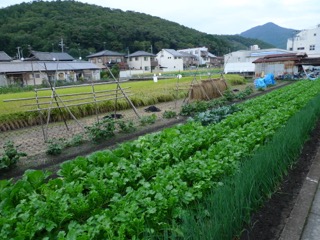
There are many reasons to be skeptical of the ultimate sustainability of megacities. They must source food and materials from far-flung places, entraining significant greenhouse gas and other costs, and displacing environmental externalities to those places, degrading them. As megacities expand their range of imported foodstuffs, for example, they destroy local food networks and self-reliance, encourage substitute crops for money, shifting the supply of food sources around to other places, disrupting ecologies and patterns of human-environment interrelations. Megacities are dependent on utilizing hydrocarbon energy that packs a hugely dense portable power. Other sources of energy, like solar or wind, need to be collected over large areas and stored. Such differences mean that it will be difficult to maintain megacities, or even large cities, using alternative sources of energy. Deconcentrating cities and relocalizing agricultural production, for example, alleviates those impacts but raises big challenges about the ability of humans to sustain themselves based on working with the potential of the soils, water, and sun in specific places. It may be impossible, but the megacity future is as well given the intensity of energy resources needed to make them function without creating sacrifice zones around the world to support them.
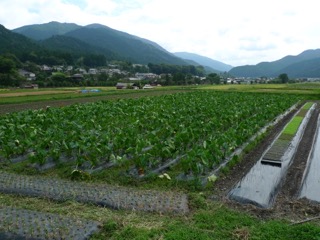
For humans to thrive in the future, it will require us to perceive ourselves as inextricably intertwined with the animate and inanimate forces that surround us, (and indeed inhabitat us like the biota in our guts). This means, paradoxically, a more deep and extensive inhabitation of the planet—people nearly everywhere in small and larger agglomerations, working in and with nature for mutual survival and well-being.
What looms large in this transformation is the question of the economy. It is clear that none of this can be accomplished without a radical transformation of the current global economic system that is increasingly financializing Earth systems, and human relations, supported by the current political regime. The dramatic intensification of monetizing: the pricing of greenhouse gas emissions, ecosystem services (an instrumentalized view of the living world), water resources, land and more, further alienates humans from living in the world and the potential sewing together a polychromatic quilt that reconnects us to the very planet we depend upon.
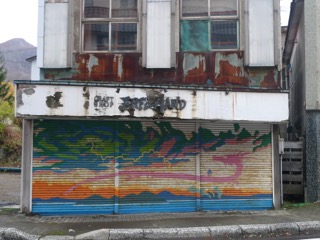
It is clear that the current neo-liberal political-economic system is deepening economic divides among people and countries. Its economic instruments applied to nature, are simply displacing impacts from one place to another, but at an accelerating pace of destruction. Economic growth, in contrast to enrichment, is slowing and becoming more elusive. The capitalist paradigm as a world economic system that works for people and the planet is failing. For cities and nature, the ability to shift graciously and well into the Anthropocene requires a fundamentally different political-economy that reflects new ethics and priorities. These are ethics of care, ethics of compassion and an orientation that asks what is sufficient for human well-being. It will involve degrowth in places, and a new type of growth everywhere, growth of partnerships among people and the planet for a wholesome future. And it will take reflection and time.
Stephanie Pincetl
Los Angeles
References
Angelo, H., Wachsmuth, D., 2015. Urbanizing urban political ecology: a critique of
methodological cityism. International Journal of Urban and Regional Research 39, 16–27.
Descola, Philippe. 2015. Prof. Philippe Descola: Winner of the 2012 CNRS Golden
Medal. College de France newsletter 7: 22-24.
Ingold, T. 2012.Toward and ecology of materials. Annual Review of Anthropology 41:427-42.
LaTour B. 2010., “May Nature Be Recomposed? A Few Questions of Cosmopolitics”. The Neale Wheeler Watson Lecture 2010 https://www.youtube.com/watch?v=Ie-_erFVz5A
Lefebvre, H., 2003. 1979] The Urban Revolution, Translated by R. Bononno. University of
Minnesota Press, Minneapolis.
Kennedy, C., Cuddihy J., Engel-Yan, J., 2007. The changing metabolism of cities. Journal of Industrial Ecology. 11, 43–59.
Pincetl, S., Bunje, P., Holmes, T., 2012. An expanded urban metabolism method towards a
systems approach for assessing urban energy processes and causes. Landscape and Urban
Planning 107, 193–202.
United Nations Environmental Program. 2016. Global Material Flows and Resource Productivity Assessment Report for the UNEP International Resource Panel.


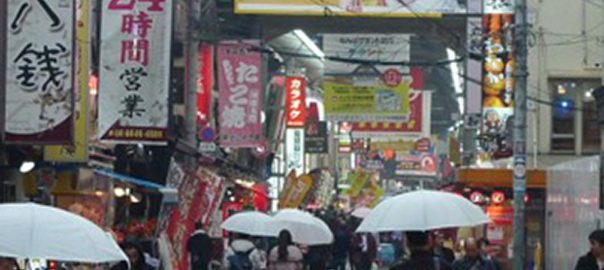
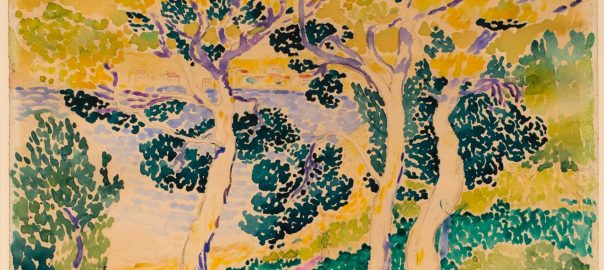

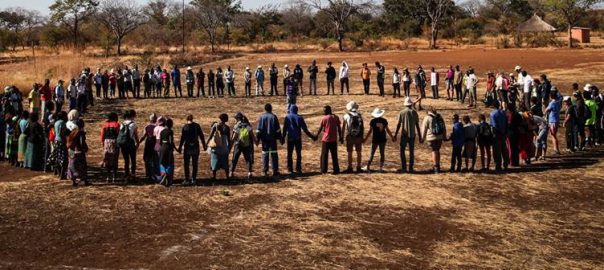
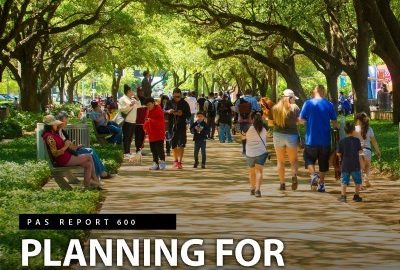
Leave a Reply